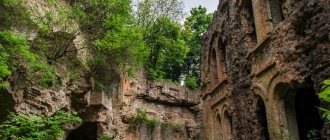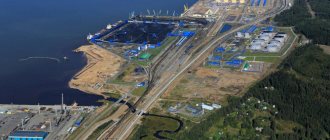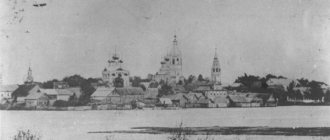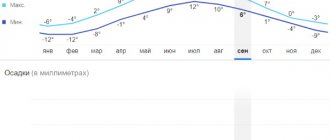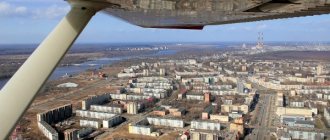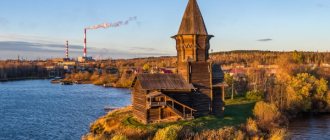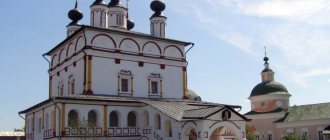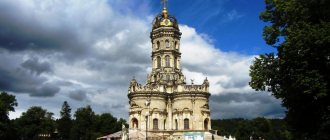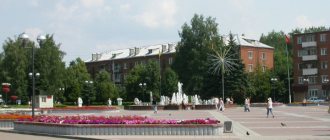| Sights What to see in winter and summer With children What to see in the surrounding area Stories and reviews from tourists Where to stay in Tarusa |
Tarusa is a small town in the Kaluga region in the bend of the Oka. If the Tsvetaevas had not come here to the dacha or settled in the Polenovs’ district, it would have remained an unknown village, the existence of which hardly anyone would have known.
For a long time, Tarusa was inhabited by artisans who made ceramics and embroidery; there was never any industry in the city. The simplicity and regularity of life necessary for creativity, the expressive landscapes of hilly banks, meadows and forests stretching into the distance were once appreciated by Joseph Brodsky, Konstantin Paustovsky, Nikolai Zabolotsky. Alexander Solzhenitsyn and Bulat Okudzhava came. And this is not the whole list. Tarusa has appeared in the artistic colors and poetic lines of dozens of works, and has become a wonderful filming location for more than one film.
Trying to understand the attractiveness of Tarusa for great people of art and science, tourists flock to the city. In one day's trip it can be difficult to capture the mood and find all the wonderful features without having lived there for years, but it is quite possible to look and touch. Tarusa for a traveler is an amazing opportunity to combine cultural knowledge with contemplation of the beauty of nature at any time of the year, winter or summer.
Oka River from the banks of Tarusa Photo: © apreleva1409
basic information
The city of Tarusa is located in the Kaluga region, 75 km from the center of Kaluga, on the left bank of the Oka River. It is separated from the Russian capital by 140 km. The nearest large settlement is located 35 km away, this is the city of Serpukhov, Moscow region.
The first mentions in history of the settlement of Tarusa date back to the mid-13th century. In 1776 the settlement became a city. Until the beginning of the 19th century. The infrastructure and industry of this place developed very slowly. Changes occurred after the Patriotic War of 1812. Within a few years, a hospital and a pharmacy were built, a factory, a plant and a district school were opened.
Today, more than 9.1 thousand people live on an area of 12.5 km².
Most of the buildings in the city are one-story and two-story buildings. Tarusa has the status of a Russian natural and architectural reserve. City Day is celebrated on July 12.
Tarusa embroidery
We specifically went to Nerezova Street to buy products from the Tarusa embroidery factory. It's hard to walk. The road climbs steeply uphill and at the same time turns sharply. So that leaving cars are not visible.
Tarusa embroidery is the same folk brand as Vologda lace and Palekh painting. During the Soviet years, they became concerned about saving the style of embroidery characteristic of the Kaluga lands, and created the Tarusa artel. Now production can be said to be dying. Many people know about Zhostovo trays or Palekh boxes, but only a few know about Tarusa embroidery. Following a tip from the guide, we came to the store at the factory. The assortment, I must say, is meager. Here you can buy linen items. But there's not much to choose from. Personally, either the color, or the size, or the price did not suit me. I don’t think it’s necessary to pay 6,000 rubles for a linen shirt, even with handmade lace, and I certainly won’t need a linen robe a la kimono. Well, it's not mine. As well as a dress in the style of the Soviet film “Hearts of Four”.
In the end, I took a napkin with the embroidered name of the city “Tarusa” for 350 rubles. And this is the lowest cost of the product in the store. Other napkins, with different embroidery or different colors, cost from 600 rubles. But next to the factory building a two-story souvenir shop is being built. The design itself is very interesting. And the fact that this house has two floors suggests an expansion of the range, and therefore an optimistic future.
Climate and weather
Tarusa has a temperate continental climate. Summer is hot and rainy. Winter is cold, the first snow usually falls in early November . The amount of precipitation for 1 calendar year is from 628 to 641 mm. The average daily temperature depends on the month and season.
| Name of the month | Average temperature in °C |
| January | -9.1 |
| February | -8.0 |
| March | -2.9 |
| April | +6.3 |
| May | +13.5 |
| June | +17.1 |
| July | +18.8 |
| August | +17.2 |
| September | +11.5 |
| October | +5.5 |
| November | -1.2 |
| December | -5.6 |
How to get there
There are several ways to get to Tarusa.
From Moscow:
| Transport | Travel time | Ticket | Peculiarities |
| Bus | 2.5 hours | 325 rub. | No. 539. Departs daily from the station. Teply Stan metro station at 09:10, 12:55, 20:10. |
| Personal car | 2 hours 05 minutes | — | You need to leave Moscow along the Simferopol highway. Drive 75 km to Serpukhov. Then head about 7 km along the road towards the city of Protvino. Then, at the historical monument “Tank”, turn at the fork in the road following the sign “Tarusa”. |
| Electric train | 1 hour 40 minutes – 2 hours | From 275 rub. | Departs daily from the Tsaritsyno metro station, Kalanchevskaya metro station, Tekstilshchiki metro station and from the Kursky station to the Serpukhov railway station. Next you need to transfer to bus No. 131 to Tarusa. Important information! Tickets to the station are on sale. “Tarusskaya”, which has no relation to the city of Tarusa (it is located in the Tula region). |
| Taxi | 1 hour 50 minutes | From 2000 rub. | It is better to find out the cost of the trip in advance from the operator who accepts the order. |
From Serpukhov:
| Transport | Travel time | Ticket | Peculiarities |
| Bus | 45 min. | 100 rub. | No. 245. It departs from the city bus station every 30-40 minutes every day. |
| Minibus | 40 min. | 140 rub. | No. 245. Departs from the city bus station on Fridays. The movement interval is 1.5-2 hours. |
| Personal car | 35 min. | — | It is not recommended to leave the highway in search of a shortcut. |
| Taxi | 30 min. | From 500 rub. | It is better to find out the cost of the trip in advance from the operator who places the order. |
From Kaluga:
| Transport | Travel time | Ticket | Peculiarities |
| Bus | 1.5 hours | From 200 rub. | Departs from the station. Kaluga-1 on weekdays according to the schedule - 9:30, 11:00, 14:50, 15:30, 18:30. On weekends - 9:30, 11:00, 15:30, 18:30. |
| Personal car | 1 hour 10 minutes | — | Along the way there will be at least 18 gas stations and 3 tire shops. |
| Taxi | 50 min. | From 700 rub. | It is better to find out the cost of the trip in advance from the operator who accepts the order. |
Valley of Dreams
Address: Tarusa, Pochuevskaya Valley How to get there: on foot or by car, 10 km north of the city
The ravine, which received its poetic name from Marina Tsvetaeva, has inspired artists at all times. The place is calm, the atmosphere here is peaceful. Flowers and berries grow along the slopes of the ravine. Despite the rosy picture, ufologists rendered their verdict - the area is anomalous. The possibility of a personal meeting with an alien, of course, did not deter tourists.
The ravine stretches for 4 km and resembles a canyon. A stream flows in the valley of the ravine. Local residents say that soap was actively brewed here for a long time. Even so, the water in the stream remained clean and clear.
Where to stay
Tarusa, whose attractions and interesting places are located within walking distance from each other, welcomes the guest with a wide variety of hotels and inns of different price categories.
The three best places to stop here are:
1. "Welna Eco Spa Resort". Address: Serpukhovskoe highway, 69. It is a complex consisting of the main hotel building, several wooden cottages and an area with separate apartments.
On the territory there are:
- pool;
- tennis court;
- spa and fitness centers;
- massage room;
- bar;
- sauna;
- library;
- children's club and playground;
- gift shop;
- animation staff.
Cost of living from 4500 rub.
per day, depending on the selected room category. 2. "Silver Age". Address: st. Mayakovskogo, 5. Located 1.5 km from the city center. It is a complex consisting of a hotel building and several separate cottages. Can accommodate 1-10 people.
Meals are provided buffet style or a la carte in the Silver Age restaurant, which is located on site. Pets are allowed. There is a sauna, spa and fitness centers, free wireless Internet, free parking, and a children's playground. Cost of living – from 1300 rubles. per day per person.
3. “Tarusa” hotel. Address: st.
Karl Liebknecht, 11-20. There are several types of rooms: Standard, Junior Suite, Suite. The maximum number of people in 1 room is 5. Each room has air conditioning. Pets of any kind are not allowed. There is a separate guarded car park and free wireless internet. Cost of living – from 900 rubles. per day. The hotel is located 300 m from the city center, close to the main attractions.
Where to eat
The list of the 3 best catering places in Tarusa includes:
- Cafe "In the Old Town". Address: pl. Lenina, 7.
- Cafe "Tarusskoye Vremya". Address: st. Lunacharsky, 13.
- Cafe "Province". Address: st. Oktyabrskaya, 14.
The menu of each cafe offers dishes of Russian and European cuisine. There is a wide variety:
- salads;
- soups;
- meat and fish dishes;
- snacks;
- side dishes;
- desserts;
- cold and hot drinks.
Attractions
Tarusa, whose attractions are known far beyond the city, has a wide variety of interesting and unique places, most of which are considered its calling cards. Every visitor to the city should visit them.
Cathedral of Peter and Paul
Located at: st. Lenina, 1B. It was founded at the end of the 18th century. on the site where there was once a small Orthodox church that burned down during a strong fire. It was consecrated immediately after completion of construction, in the spring of 1790. For several decades, the cathedral was visited by parishioners, almost all of whom were local residents.
Some of them repeatedly donated icons that were previously kept in their homes. In 1933 the temple was closed, and later it was partially destroyed. During the Soviet period, the building was rebuilt and used as the House of Pioneers. The restoration of the cathedral began in 1999 and lasted almost 8 years. Today the cathedral is open to the public.
Church of the Resurrection
Located on the street. Efremova, 7. It is the oldest temple in Tarusa. It was built in the first half of the 17th century. The building was rebuilt several times. Today it completely repeats the building plan of 1901. After the revolution, the work of the temple was stopped, and until 1994 it was closed.
In the period from 1994 to 1998, a bell tower was built, a dome was erected, a central iconostasis was installed inside, internal and external repair work was carried out, including wall painting. Today it is a functioning church, with a Sunday school for 50 people.
A distinctive feature is that inside the temple are stored such unique things as the handwritten code of Tsar Alexei Mikhailovich and the icon of the Resurrection, transferred from the Petrovsky Monastery.
Source and chapel of the Bogolyubsk Icon of the Mother of God
Location: st. Efremova, 1, under the Resurrection Mountain. Construction of the chapel began in the fall of 2007 and lasted almost 2 years. In 2009 it was consecrated.
There is a holy spring nearby, which has been known far beyond the city since the mid-17th century. Also in 2007, a font was built near the spring. It is still open every day, seven days a week, from 10:00 to 18:00.
House-Museum of the Tsvetaevs
Address: st. Rosa Luxemburg, 30. The house was bought at the end of the 19th century by the poetess’s grandfather. Subsequently, Marina Ivanovna’s grandmother and father lived there, as well as her sister, brother and herself. It is generally accepted that Tsvetaeva wrote her first youthful poems in this house.
The museum was opened here in the early 90s. last century. Its exhibition includes the Tsvetaevs' personal belongings and furniture from their Moscow home. Museum opening hours: from Tuesday to Sunday inclusive from 10:00 to 17:00, Monday is a day off. Sightseeing tours lasting 1.5 hours are held several times a week: on Thursday starting at 19:00, on Saturday and Sunday at 12:30.
Ticket prices for visiting without a guide:
- Adult – 100 rub.
- For pensioners, students and schoolchildren – 50 rubles.
Monument to M. I. Tsvetaeva
Installed on the embankment, which is part of the city park, in the fall of 2006. The authors of the two-meter sculpture were the architect B. Messerer and the sculptor V. Soskiev.
Paustovsky House-Museum
Located on the street. Proletarskaya, 2. The opening took place in May 2012. The museum’s exposition recreates the atmosphere that was in this place in the middle of the last century, when Konstantin Georgievich lived here and was engaged in creativity.
The collection of the house-museum contains the author’s personal belongings, including his typewriter. Open on Fridays, Saturdays and Sundays from 11:00 to 18:00. You can visit it only by appointment; the cost of a ticket for the excursion is 300 rubles.
Dacha of Svyatoslav Richter
The second name is “Dacha on the Oka”. Located 9 km from the city of Tarusa, in the village of Alekino. It is a wooden building, the windows of which offer picturesque views of the surrounding nature.
The famous musician settled here, installed a small grand piano inside the house, organized a small office and a bedroom in 1950. This place received the status of a dacha after Richter’s death, and in 1998 the first concert dedicated to the memory of Svyatoslav Teofilovich was held in front of the building.
Monument to K. G. Paustovsky
Installed in 2012 on the street. Dekabristov, 10. The sculpture depicts the writer together with his beloved dog. The authors were architects N. Markin and V. Rzhevsky, as well as sculptor V. Tserkovnikov.
Estate Polenovo
Located on the territory of the Tula region, in the village of Strakhovo. It is a museum-reserve . In the estate, which the artist bought in 1890, he lived with his family.
The estate consists of several buildings, including:
- House-museum with the main exhibition.
- Stables and carriage house.
- Bathhouse.
- Manager's house.
- Gardener's house.
- Pine Alley.
- And other.
Museum opening hours: from October to May - from 11:00 to 16:00, from May to October - from 11:00 to 17:00. Monday and Tuesday are non-working days. The cost of tickets to the “Big House”, where the main exhibition is presented, is 250 rubles for adults, 150 rubles for pensioners and students, and free admission for schoolchildren.
Various discounts apply. A horseback tour of the estate is possible; it is offered to guests in two route options.
Manor Baryatino
Located in the village of Baryatino, 19 km from Tarusa. The history of this place dates back to the 17th century. In the 19th century Prince D.S. Gorchakov lived here with his wife. They kept several unique collections within the walls of their house, consisting of paintings, decorative and applied arts, and unique books.
It is known for certain that paintings by Bryullov, Orlov, Rubens, Lanfranco, Delacroix and many other famous artists were collected here.
Today it is a protected area that includes several buildings and structures, including:
- Main house. Made in "Russian style". There is a school there.
- Church. Built in 1859. Closed.
- Horse and cattle yard.
- Manager's house.
- Forge and others.
Istomino Estate
Located 5 km from the city of Tarusa. The first building on the territory of this estate was built at the beginning of the 18th century. It has survived to this day with minor changes during several reconstructions. Next to it is a temple complex, which includes the Assumption Church.
It was abandoned for many years, and only in 2006 did its restoration begin. In addition, in Istomino there is a dilapidated grotto and ancient tombstones. Entrance to the territory is free; organized excursions have not been held for many years.
Tarusa Art Gallery
Location: pl. Lenina, 1A. It was opened in March 1963. Today it is a branch of the Kaluga Regional Art Museum. The area of its exhibition hall is more than 600 m², temporary exhibitions occupy about 300 m².
The main collection includes items from the Russian collection of paintings and modern art, wooden sculptures, glass and porcelain objects. Opening hours: Wednesday – Sunday, from 10:00 to 18:00, ticket offices open until 17:30. The entrance ticket for an adult costs 100 rubles, for pensioners and students - 50 rubles, for schoolchildren - 30 rubles.
Tarusa Museum of Local Lore
Address: st. Engelsa, 4. Opened at the end of 1988, six months later it became a branch of the Kaluga Regional Art Museum. The museum is located in a 19th-century building, which is an architectural monument of regional significance.
The museum exhibition consists of several sections:
- Story.
- Ethnography.
- People's industry.
- Literature and art.
Opening hours from 10:00 to 17:00, closed on Monday. A bus sightseeing tour of the city operates on the basis of the Tarusa Museum of Local Lore.
Private Museum of Sergei Zharov
Located in the courtyard of house No. 11A on the street. Schmidt. It is a unique museum of its kind. Most of all the exhibits, of which there are at least 200, were made by the hands of S.V. Zharov himself from a variety of bolts, working tools, old tires, parts of broken equipment, wire, bottles, and gears.
The museum is open every day from 09:00 to 19:00, tickets cost 100 rubles.
Monument to B. A. Akhmadulina
It was installed in 2013 on the embankment, next to the monument to M. Tsvetaeva. The author was the poetess’s husband, the artist B. Messerer.
Private museum
Address: st. Shmidta, 11a Phone: 8-910-600-17-36 Website: https://www.tarusamuseum.ru/ Opening hours: by agreement Cost: 150 rubles
The first private museum in Tarusa was opened by an ordinary citizen Sergei Zharov in his own home. A large room has been allocated for the exhibition hall. The most extensive collection of irons is presented: gas, alcohol, especially for trousers; made in England, Germany, Holland.
Other interesting exhibits of the museum:
- kerosene lamps;
- gramophones;
- photographs of the city over the years;
- vintage sewing machines.
In the courtyard of the house there are sculptures created by the owner. Zharov made metal Onegin, Clinton, Chubais, and there are also figures of heroes from children's fairy tales on the territory.
Everything in the museum is allowed to be touched and photographed.
In 2022, master Sergei Zharov died. His wife continues to conduct excursions.
What to see in 1 day
Tarusa, the sights of which a tourist can explore in 1 day, is a very small but interesting city. All the main monuments, museums and temples of the city are within walking distance of each other.
A one-day excursion plan could be the following route:
- Museums. You should definitely visit the Tarusa Museum of Local Lore, as well as the House Museum of your choice (for example, the House Museum of K. Paustovsky or the House Museum of M. Tsvetaeva).
- Temples . The main cathedral of Tarusa is the Cathedral of the Holy Apostles Peter and Paul.
- Monuments. On the embankment of the Oka River, which is part of the central city park, several sculptures are installed in the open air in memory of famous people connected in one way or another with this city. In addition, on Spruce Alley there is a monument to those who fell in the Battles for the Motherland.
Monument to K.G. Paustovsky in Tarusa - In the remaining time, you can visit the private exhibition of Sergei Zharov or take a walk in the park, along the picturesque embankment, or visit Lenin Square.
Tips for staying in Tarusa
There are several points that a tourist should remember:
- It’s better to come to Tarusa in summer or winter: in spring and autumn it can be too muddy;
- if you are going to walk along the banks of the Oka River or ride a boat, take windproof/warm clothing with you;
- It is better to charge gadgets at night so that the charge lasts for the whole day;
- if you plan to spend part of the weekend at a recreation center or in a suburban boarding house, then it is better to explore the city’s attractions on the first day;
- prepare a map of Tarusa in advance and mark places of interest on it.
Tourist map of Tarusa
On the tourist map of the city you can plot an approximate excursion route in advance.
What to bring
Tarusa, whose attractions are far from the only calling card of the Kaluga region, is rich in a variety of souvenirs:
- Tourists who come here are sure to buy products from local craftsmen made of ceramics and wood, as well as paintings.
- Many people prefer to purchase linen products (bed linen and clothing) in Tarusa.
- In the arts and crafts store “Ksyusha”, located at pl. Lenina, 5, a large selection of souvenirs with the symbols of the city for different tastes and budgets.
- When leaving the city, there is sometimes a small market where locals sell domestic and wild berries, as well as fresh mushrooms.
Tarusa is a small and hospitable city. All its attractions can be visited in 1-2 days. At the same time, you should definitely pay attention to the nature of this place.
Many famous creative people said and wrote that “Tarusa is a city where inspiration comes!”
Author of the article: Ksenia Schneider
Article design: Svetlana Ovsyanikova
Embankment
The shores of the Oka River are loved by both locals and tourists. Vacationers are attracted primarily by the pier, hotels and restaurants. But there are also 3 interesting monuments on the city embankment:
- Stone in memory of Marina Tsvetaeva, made by Semyon Ostrovsky in 1962. Due to the turbulent political situation in the country, the author had to hide the work. The stove was installed in 1988 in the place where the poetess often walked.
- The monument to Bella Akhmadulina was created by her husband Boris Messerer. The townspeople take special care of the object: the poetess never had her own home in Tarusa, which is why there is no museum named after her. Only the monument reminds us that Akhmadulina lived in the city for quite a long time.
- The monument to Konstantin Georgievich Paustovsky was opened on the 120th anniversary of the writer. The prose writer lived in Tarusa for 20 years. Paustovsky described the surroundings of the city in his works and admitted that the main source of his inspiration was Oka.

